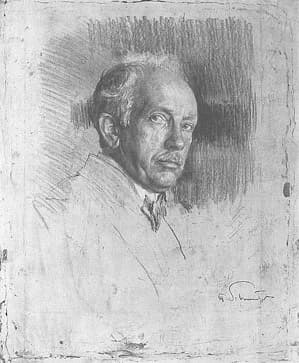Rain, rain, everywhere…but not always where you need it. Rain can be a gentle shower or just a patter on the sidewalk, or a torrential downburst, saturating everything with WET. Let’s look at how composers depict rain.
Cloudburst by American composer Eric Whitacre was only the second piece he’d written for choir. Set to a text by Octavio Paz about a broken water jar, Whitacre evokes a sudden and sharp desert cloudburst, using sound of the chorus’ snapping fingers and claps for the sound of drops hitting the desert and bells and thunder sheets to emphasize the accompanying light show.
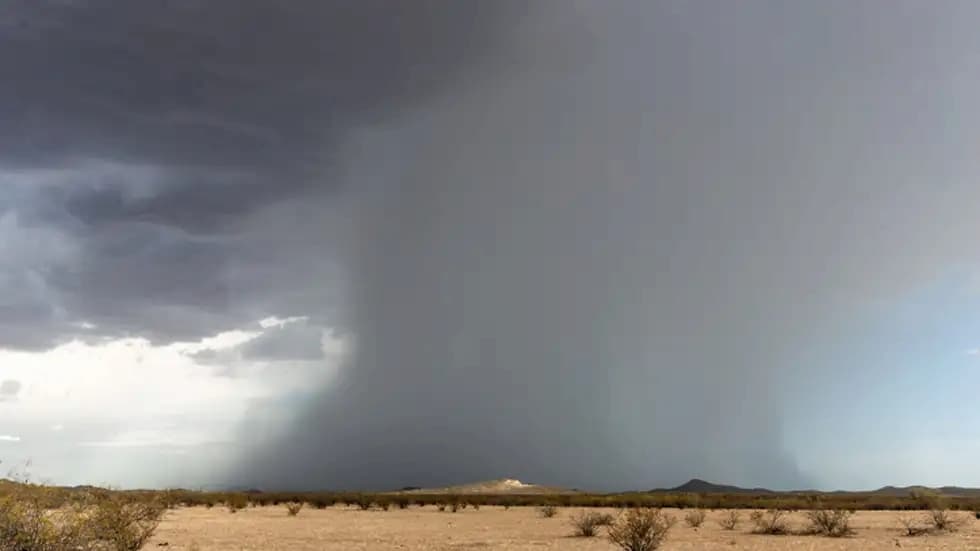
Desert Downpour
Eric Whitacre: Cloudburst
Korean composer Lee Ru-ma, better known by his stage name of Yiruma, worked in both the classical and pop industry as well as writing music for television series. His style is minimalist but simple, with softened dissonances and reuse of themes. His rainstorm creates an atmosphere that tetters between serene and melancholic.

Yiruma: Kiss the Rain (Giacomo Scinardo, piano)
Setting a poem by Elsa Gidlow, American composer Lou Harrison wrote May Rain in 1941. The rain feeds both the lover’s heart and the root and seeds of Mother Earth.
Lou Harrison: May Rain (Marina de Liso, mezzo-soprano; Adriano Ambrosini, piano; Guido Facchin, percussion)
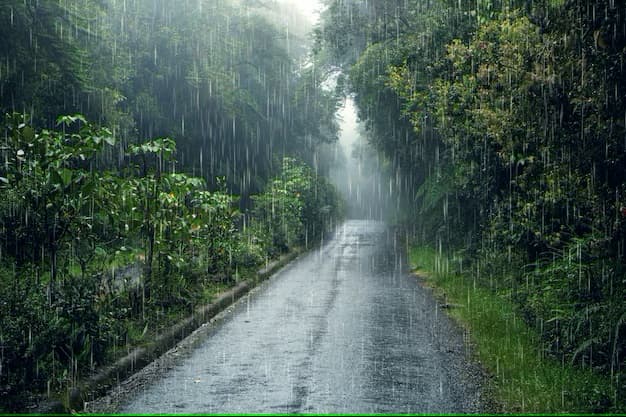
Japanese composer Toru Takemitsu set the idea of the rain tree from a novel by Kenzaburo Oe: ‘It was named the ‘rain tree’, for its abundant foliage continued to let fall rain drops from the previous night’s shower until the following midday’. This percussion piece uses first crotales and then a metallic vibraphone and a pair of wooden marimbas.
Toru Takemitsu: Rain Tree (Toronto New Music Ensemble)
A poem by Eeva-Liisa Manner that starts: ‘The rain opens the sleeper’s ears I the rain opens the traveller’s shadows I the rain opens hearing, walking inwards’ was behind Lotta Wennäkoski’s Sade avaa (Rain opena). She didn’t use the poem as the basis for a piece of programme music but rather as a point of inspiration. The bass clarinet ‘recites the poem in code’ – giving us the important points, but not in a way that we can immediately understand. She describes the work as ‘noise music’ filled with rubbing, tapping, patting, rustling, and breathing in the musical parts.
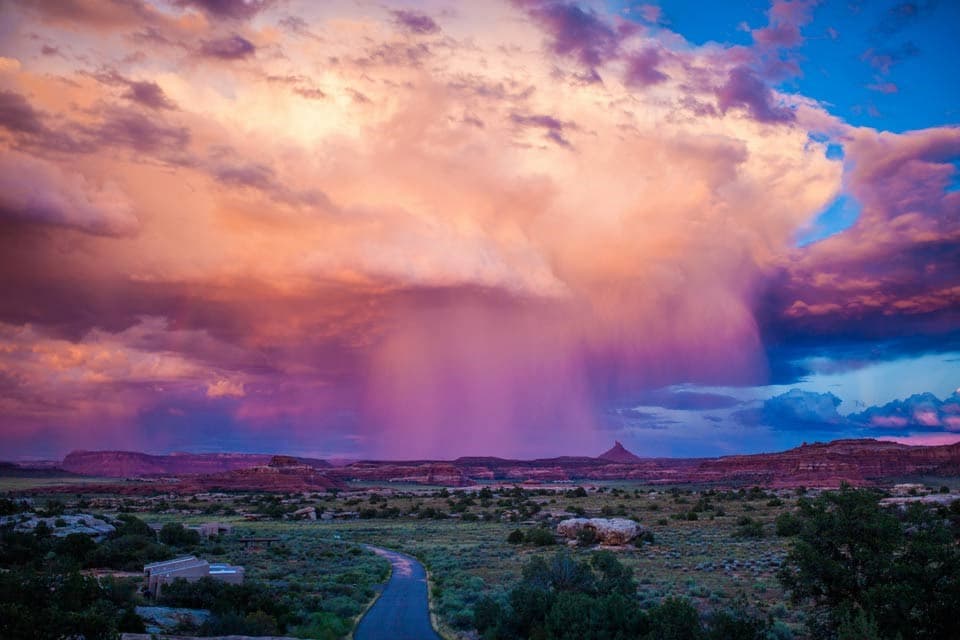
Storm over Needles Canyon, Colorado (National Park Service) (Photo by Emily Ogden)
Lotta Wennäkoski: Sade avaa (Rain opens) (Heikki Nikula, bass clarinet; Avanti Chamber Orchestra, members; Dmitri Slobodeniouk, cond.)
In western Bulgaria, the ancient ceremonies for rain have used a specific polyphony, often described as ‘astringent’. The piano in the hands of Yassen Vodenitcharov is a percussion instrument, and the timbres of the soprano sax, clarinet, and violin are blended to create that rain-making sonority.
Yassen Vodenitcharov: Rain-Making Song (Susan Fancher, soprano saxophone; member of the Ensemble contemporain de Montréal)
The title comes from a poem by Philip Larkin, where he’s travelling by train and seems to pass an infinity of weddings – all alike in their fat mothers, fathers in suits with broad belts, the unfortunate uncle who yells terrible things, and then the permed hair, nylon gloves, and fake jewelry that mark the bride. As the train slows, the poet feels like he’s been released, ‘like an arrow-shower, Sent out of sight, somewhere becoming rain.’
Ashley-John Long: Somewhere Becoming Rain (Trio Anima)
Between Rain is a 2014 piece by British composer Edmund Finnis for string orchestra. It’s not so much about being between rainstorms as being between raindrops.
Edmund Finnis: Between Rain (London Contemporary Orchestra; Robert Ames, cond.)
Red Rain was inspired by a painting by Native American painter Jaune Quick-to-See Smith, where ‘different sizes of rain drops, in red color and in various shapes of native-American symbols, pour down…’. The body is that of the American General Custer. Chinese composer Huang Ruo questions the rain: are the drops blood? Rain? Arrowheads? As the ideas become more abstract, the ‘colors become sounds, sounds become shapes…’. (composer)
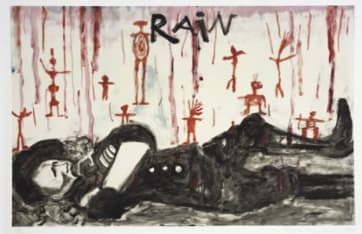
Jaune Quick-to-See Smith: Rain
Huang Ruo: Red Rain (Emanuele Arciuli, piano)
For Scottish composer Judith Weir, rain helps us achieve abundance from austerity – the seeds awaken and push through the earth and bring back life. Her title comes from the ideas around the annual Indian monsoon rains, which bring life to the burning heart of India.
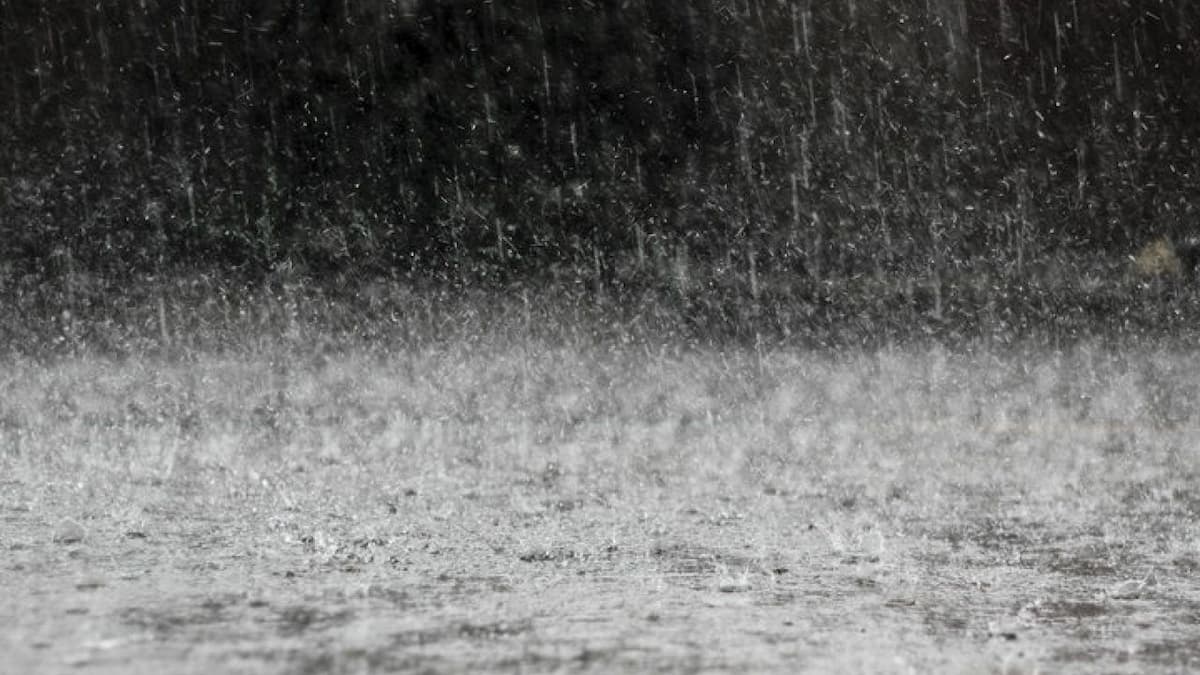
Rain
Judith Weir: The Welcome Arrival of Rain (BBC Symphony Orchestra; Martyn Brabbins, cond.)
And, of course, there’s Nacio Herb Browns’ tribute to both rain and love.
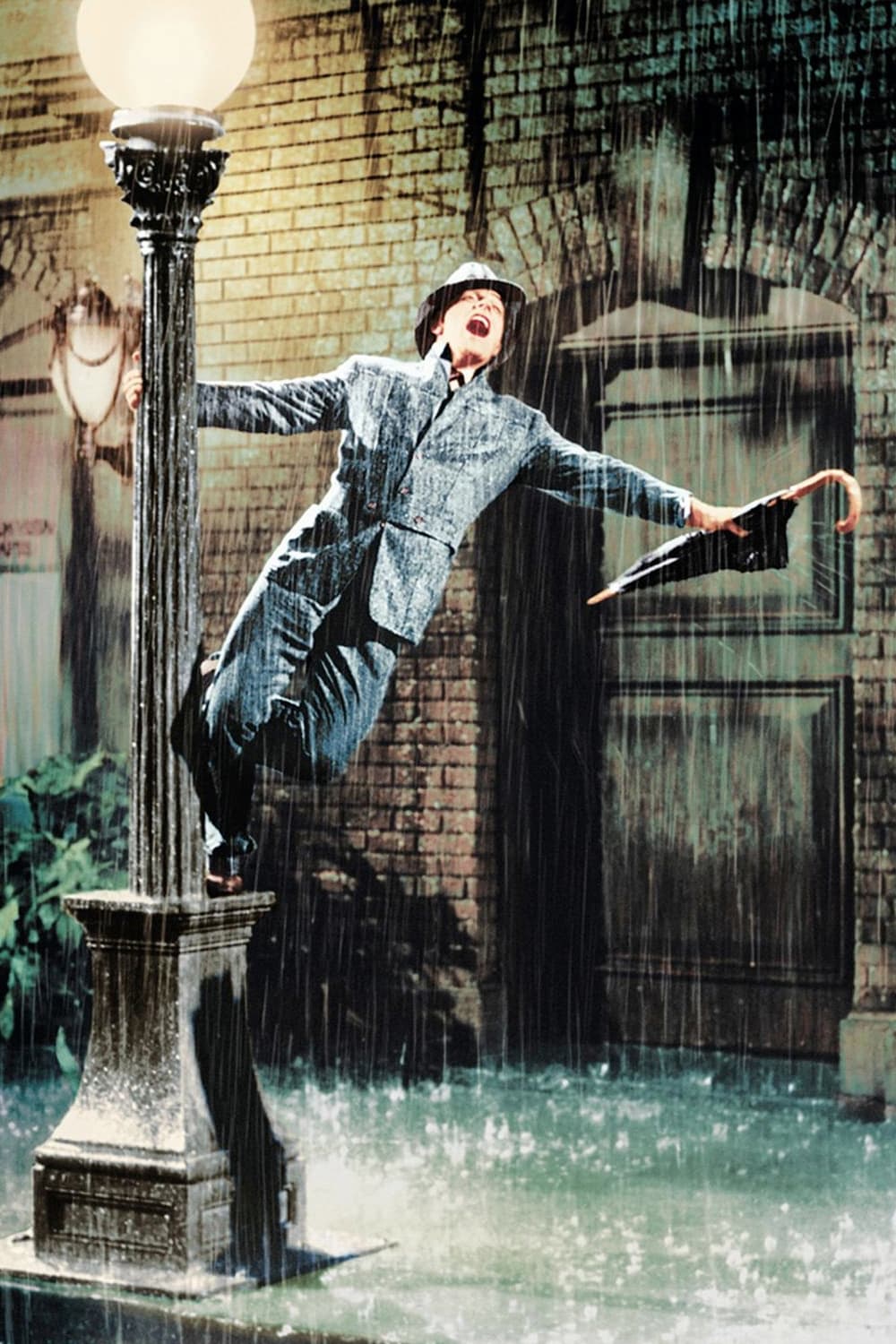
Gene Kelly singin’ in the rain, 1952
Nacio Herb Brown: Singin’ in the Rain (Gene Kelly, vocals; Debbie Reynolds, vocals)
For composers, rain can bring back memories of a specific time and place, such as in Whitacre’s Cloudburst or Wennäkoski’s Rain opens, which brings back memories of a wet winter in Amsterdam. Warm or cold, light or a downpour, rain makes us reconsider the outside world and what brings life, or perhaps a return to one’s comfy bed.
For more of the best in classical music, sign up for our E-Newsletter

